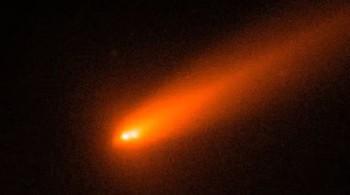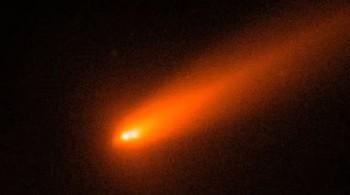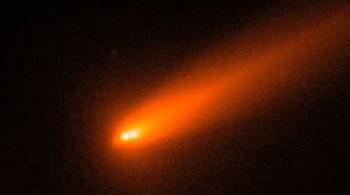
Comet C/2025 K1 (ATLAS) breaks into 3 after coming close to Sun
The vast expanse of our solar system is home to numerous celestial bodies, each with its unique characteristics and behaviors. Comets, in particular, have long fascinated astronomers and space enthusiasts due to their mysterious nature and spectacular displays in the night sky. Recently, a remarkable event occurred involving Comet C/2025 K1 (ATLAS), which broke into three pieces after swinging too close to the Sun. This extraordinary occurrence was captured by astronomers using Italy’s Copernicus telescope, providing a rare glimpse into the dynamic and often unpredictable world of comets.
Comet C/2025 K1 (ATLAS) was first discovered in May 2025 by the Asteroid Terrestrial-impact Last Alert System (ATLAS), a robotic astronomical survey system designed to detect near-Earth asteroids and comets. Initially, the comet was thought to be a single, intact object, but as it approached the Sun, astronomers began to notice changes in its structure. On October 8, the comet made its closest approach to the Sun, known as perihelion, and it was during this time that its nucleus became unstable.
The intense heat and gravitational forces exerted by the Sun caused the comet’s nucleus to break apart, resulting in three distinct pieces. Two large chunks, estimated to be about 2,000 kilometers apart, were observed drifting away from each other, while a smaller third piece was seen to the left of the pair. This dramatic event was witnessed by astronomers using the Copernicus telescope in Italy, which provided stunning images of the comet’s fragmentation.
The breakup of Comet C/2025 K1 (ATLAS) is not an unprecedented event, as comets are known to be fragile and prone to fragmentation. However, the opportunity to observe this process in real-time is rare, and astronomers are eager to study the data collected during this event. By analyzing the images and other observational data, scientists hope to gain a better understanding of the comet’s composition, structure, and behavior.
The study of comets like C/2025 K1 (ATLAS) is important for several reasons. Firstly, comets are thought to be remnants from the early days of our solar system, and their composition can provide valuable insights into the formation and evolution of our cosmic neighborhood. Secondly, comets can pose a potential threat to Earth, as their orbits can bring them close to our planet, and in rare cases, even collide with us. By understanding the behavior and structure of comets, astronomers can better predict their orbits and potential hazards.
The observation of Comet C/2025 K1 (ATLAS) also highlights the importance of astronomical surveys and telescopes in monitoring the skies for celestial events. The ATLAS system, which discovered the comet, is a prime example of how robotic surveys can detect and track near-Earth objects, providing early warnings for potential hazards. The Copernicus telescope, which captured the comet’s breakup, demonstrates the value of ground-based telescopes in providing high-resolution images and data for scientific analysis.
In conclusion, the breakup of Comet C/2025 K1 (ATLAS) is a remarkable event that offers a unique opportunity for astronomers to study the behavior and composition of comets. The observation of this event using the Copernicus telescope in Italy has provided stunning images and valuable data, which will help scientists better understand the dynamics of comets and their role in our solar system. As we continue to explore and monitor the skies, we may uncover more secrets about these mysterious celestial bodies and their place in the grand scheme of our universe.






